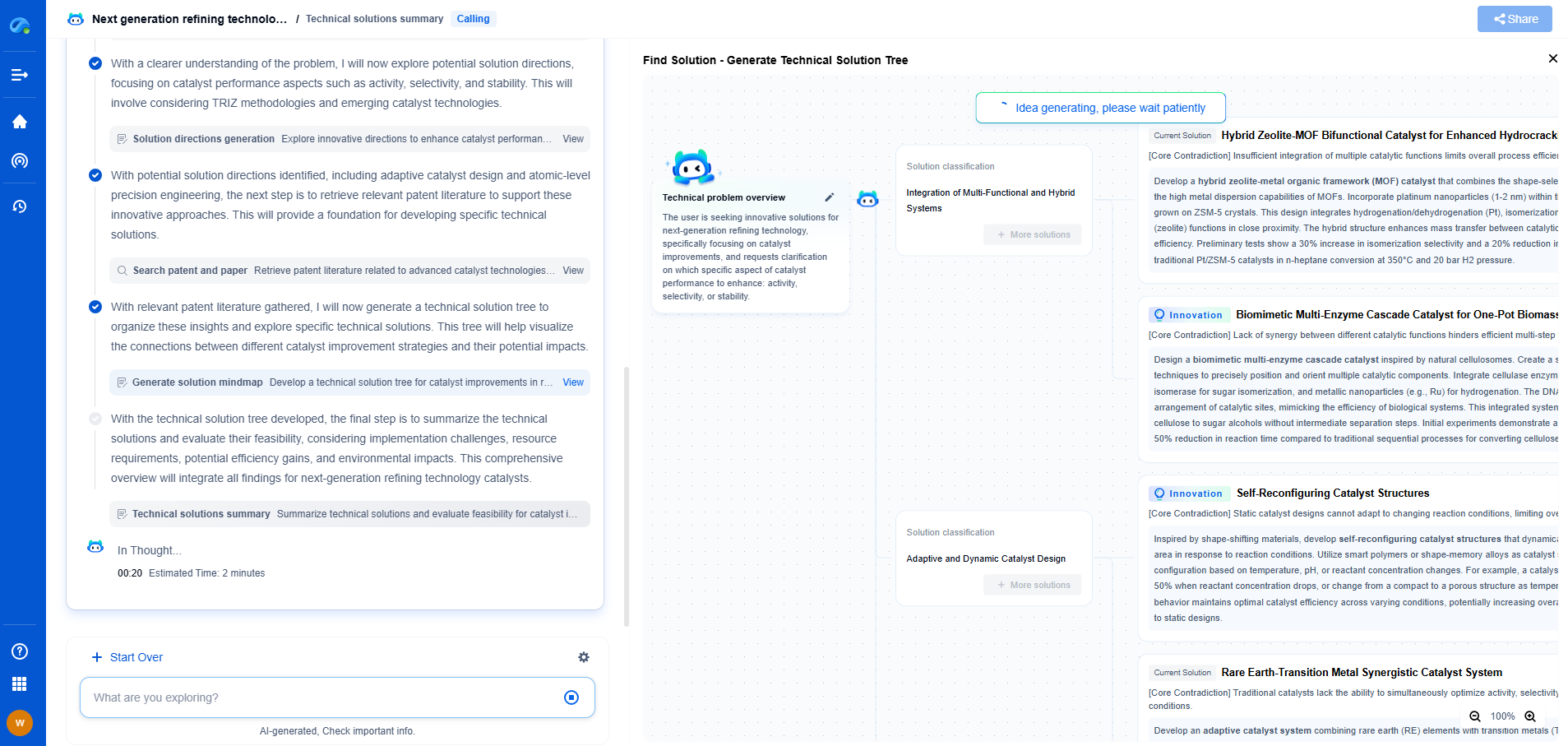Analog Display vs Digital Display: Which One Offers Better Readability?
JUL 17, 2025 |
In today's tech-savvy world, both analog and digital displays are omnipresent, be it on wristwatches, dashboards, or appliances. They each have their unique strengths and weaknesses, especially when it comes to readability. In this blog, we will explore the readability aspects of both types of displays to help you determine which one might best suit your needs.
Understanding Analog Displays
Analog displays are characterized by their use of hands or needles to indicate time or measurements on a dial. They have been around for centuries and are often associated with a classic and timeless aesthetic. The key advantage of analog displays is their ability to provide a visual representation of information, which can be easier for many people to interpret quickly.
Advantages of Analog Readability
One of the most significant benefits of analog displays is their intuitive nature. Because they display information in a linear or circular fashion, users can often understand the data at a glance without needing to process numbers. For example, glancing at a clock face with hands pointing at different positions can quickly convey the time without the need to read numbers. This can be especially advantageous in situations where quick, at-a-glance information is more valuable, such as while driving.
Furthermore, analog displays can be easier on the eyes in low-light conditions. The absence of bright digital screens reduces glare and eye strain. The human brain is also adept at recognizing patterns, making it easier to notice changes in the position of the hands on a watch or gauge, which can be crucial in environments where safety or rapid decision-making is required.
Challenges with Analog Readability
However, analog displays are not without their challenges. They can sometimes lack precision, especially when a high degree of accuracy is required. Reading exact measurements on an analog scale can be difficult, leading to potential errors. Moreover, in complex or dim lighting conditions, the lack of backlighting can hinder readability, especially for those with visual impairments.
Exploring Digital Displays
Digital displays, on the other hand, represent information using numerical digits. They have become increasingly popular with the rise of digital technology, offering a modern and often more compact design. Digital displays are known for their precision, providing exact numeric values that can be crucial in many applications.
Advantages of Digital Readability
The clarity and precision of digital displays are their primary readability advantages. They provide exact numbers, which can be particularly beneficial when precise measurements are necessary, such as in scientific instruments or cooking appliances. For those who prioritize accuracy over visual representation, digital displays are often the preferred choice.
Digital displays often come with backlighting, making them easy to read in both bright and low-light conditions. This feature is especially beneficial for devices used in various lighting environments, such as alarms or smartphones. Additionally, digital displays can be equipped with features such as adjustable brightness and contrast, accommodating different visual preferences.
Challenges with Digital Readability
Despite their precision, digital displays also present some drawbacks in terms of readability. They often require a more deliberate focus to interpret information, as users must read and process numbers rather than simply glancing at a position or pattern. In situations where quick information retrieval is necessary, this can be a disadvantage.
Moreover, digital displays can cause eye strain due to their often bright and flickering screens. Prolonged exposure to digital screens may lead to discomfort, a significant concern for those who spend long hours interacting with digital devices.
Conclusion: Choosing the Right Display for You
Ultimately, the choice between analog and digital displays depends on individual preferences and specific use cases. If you value quick, intuitive interpretation and a classic aesthetic, analog displays may offer better readability for you. On the other hand, if precision, modern design, and adaptability to different lighting conditions are your priorities, digital displays might be more appropriate.
Both display types have their unique advantages and challenges. When choosing between them, consider the context in which you will use the display, your personal readability preferences, and any specific requirements of your activities or environment. By evaluating these factors, you can make an informed decision that enhances your experience with your chosen display technology.
Whether you’re developing multifunctional DAQ platforms, programmable calibration benches, or integrated sensor measurement suites, the ability to track emerging patents, understand competitor strategies, and uncover untapped technology spaces is critical.
Patsnap Eureka, our intelligent AI assistant built for R&D professionals in high-tech sectors, empowers you with real-time expert-level analysis, technology roadmap exploration, and strategic mapping of core patents—all within a seamless, user-friendly interface.
🧪 Let Eureka be your digital research assistant—streamlining your technical search across disciplines and giving you the clarity to lead confidently. Experience it today.
- R&D
- Intellectual Property
- Life Sciences
- Materials
- Tech Scout
- Unparalleled Data Quality
- Higher Quality Content
- 60% Fewer Hallucinations
Browse by: Latest US Patents, China's latest patents, Technical Efficacy Thesaurus, Application Domain, Technology Topic, Popular Technical Reports.
© 2025 PatSnap. All rights reserved.Legal|Privacy policy|Modern Slavery Act Transparency Statement|Sitemap|About US| Contact US: help@patsnap.com

